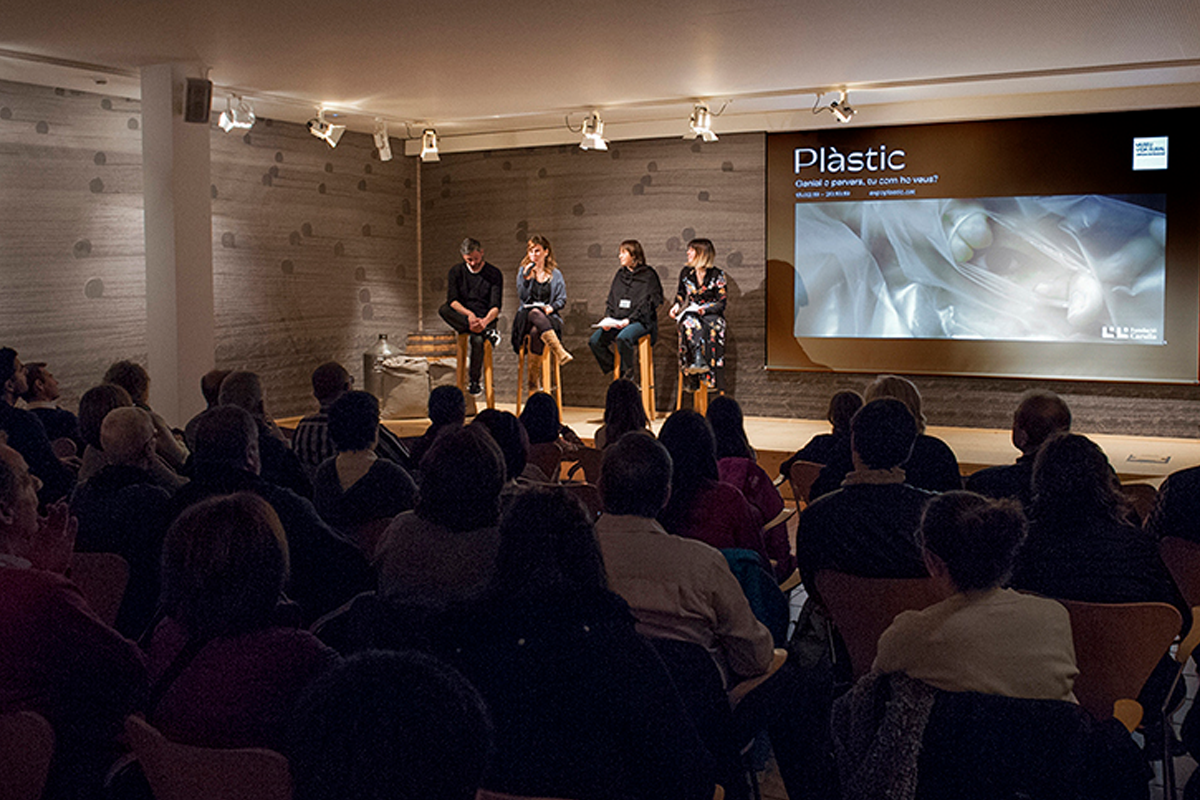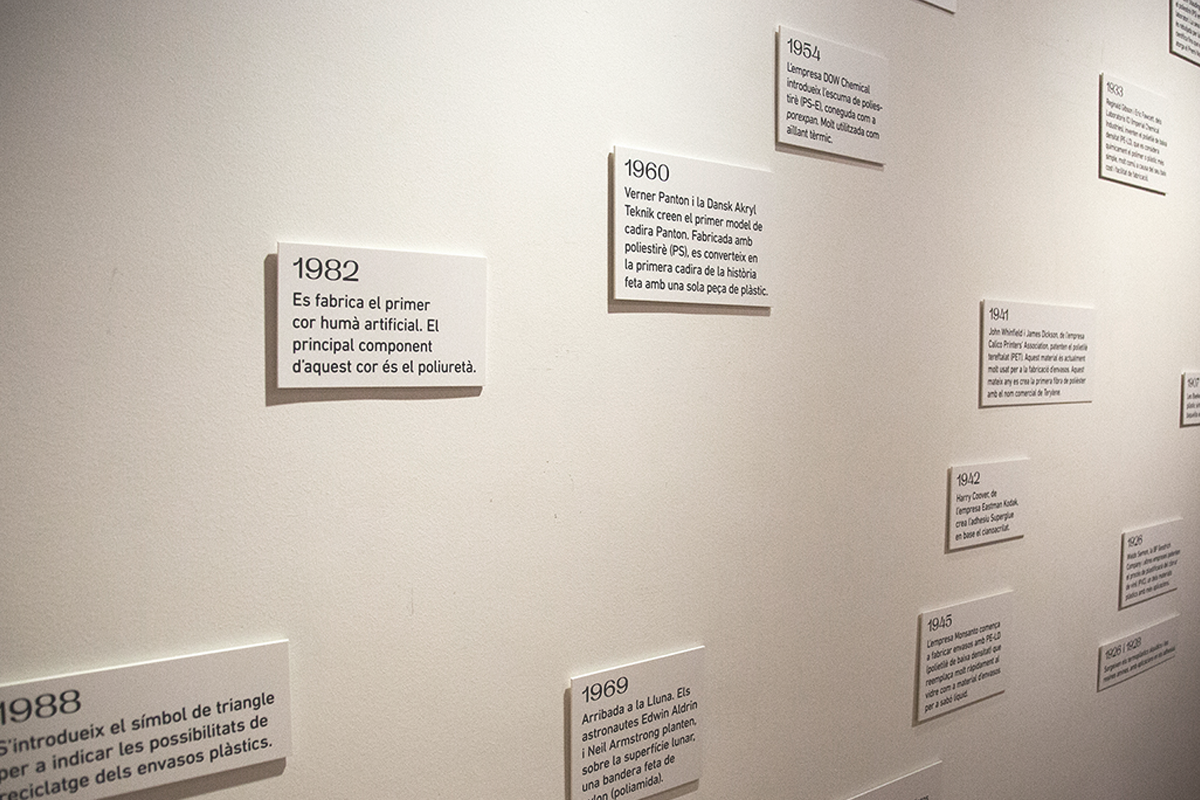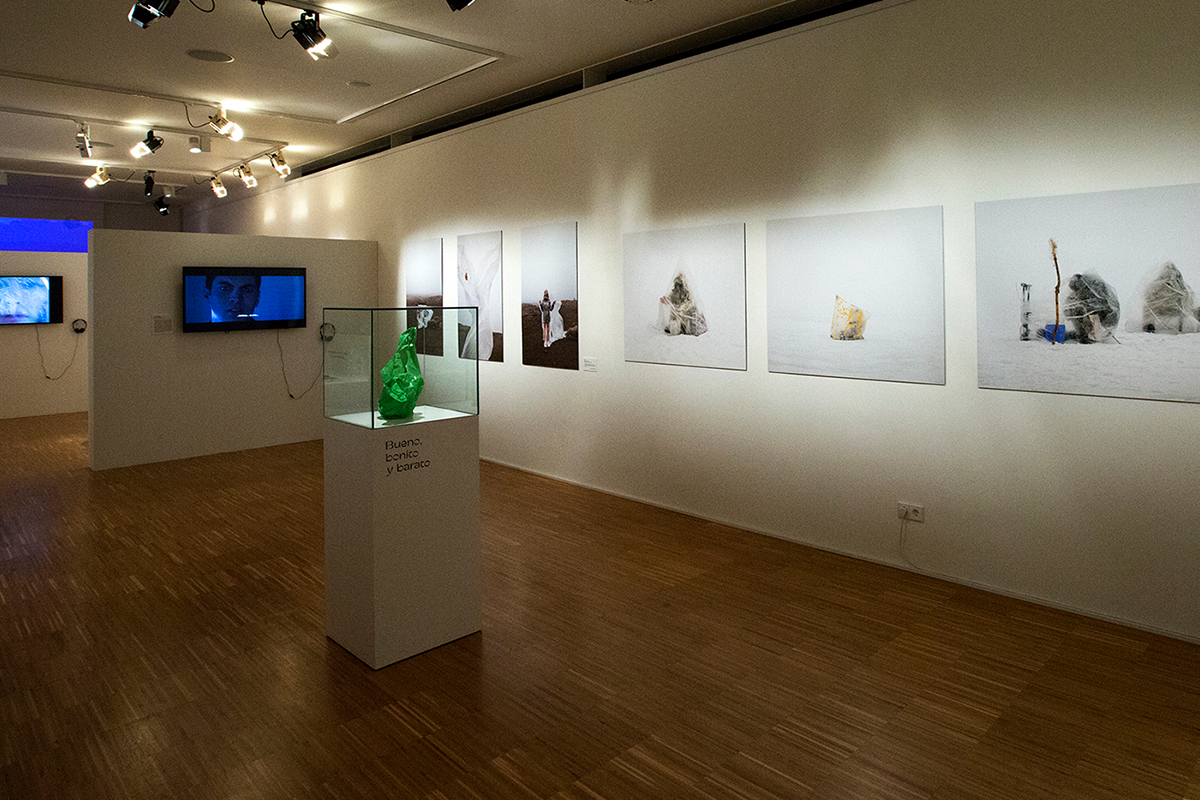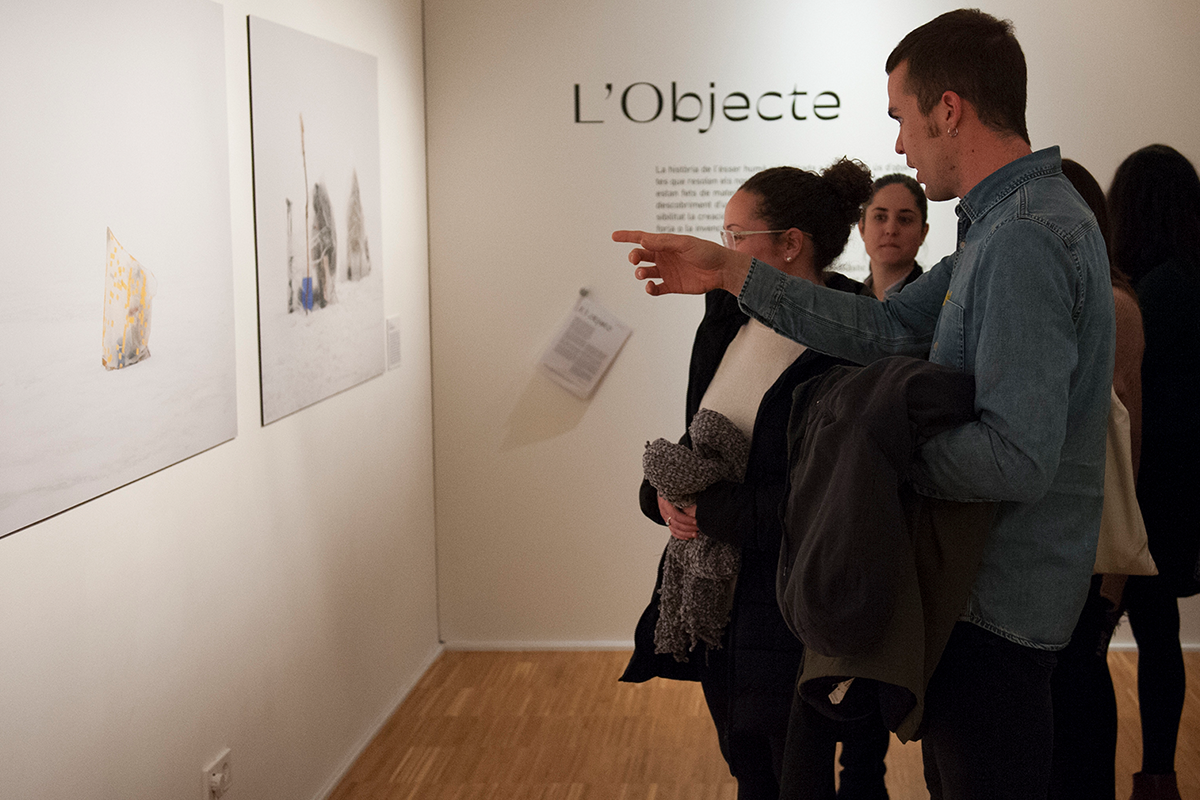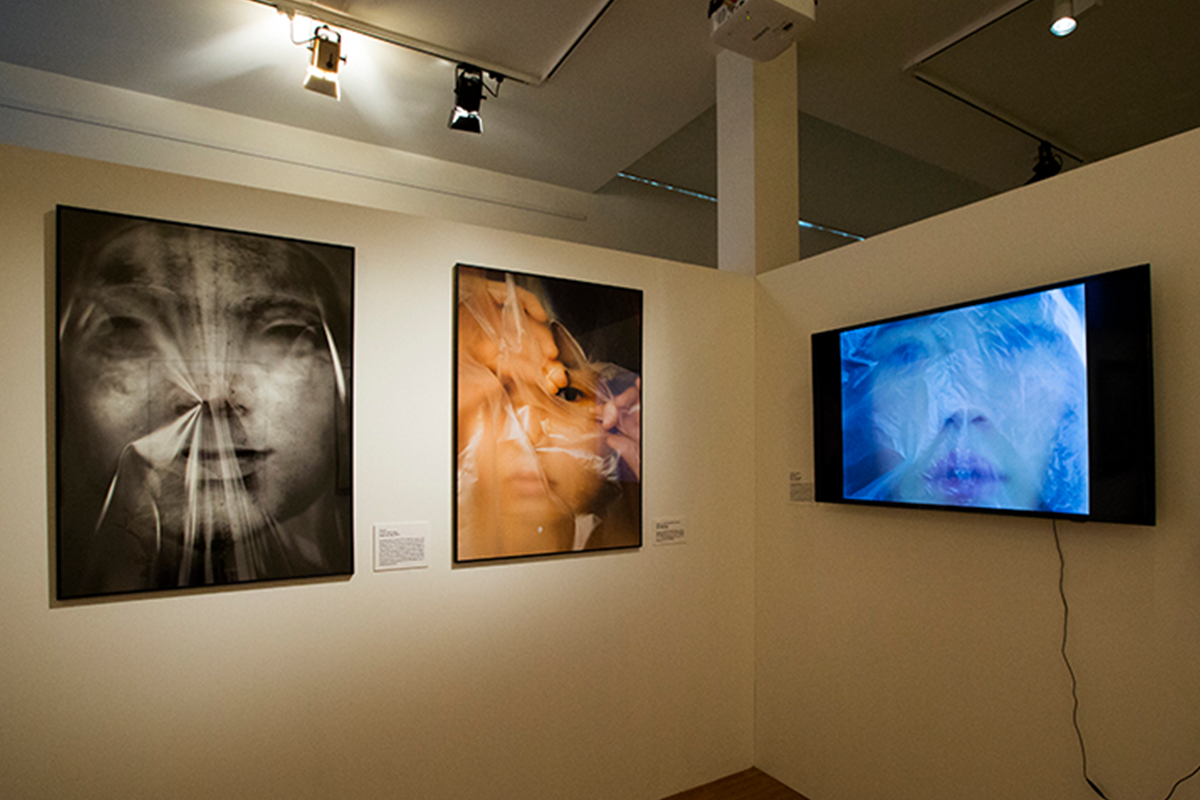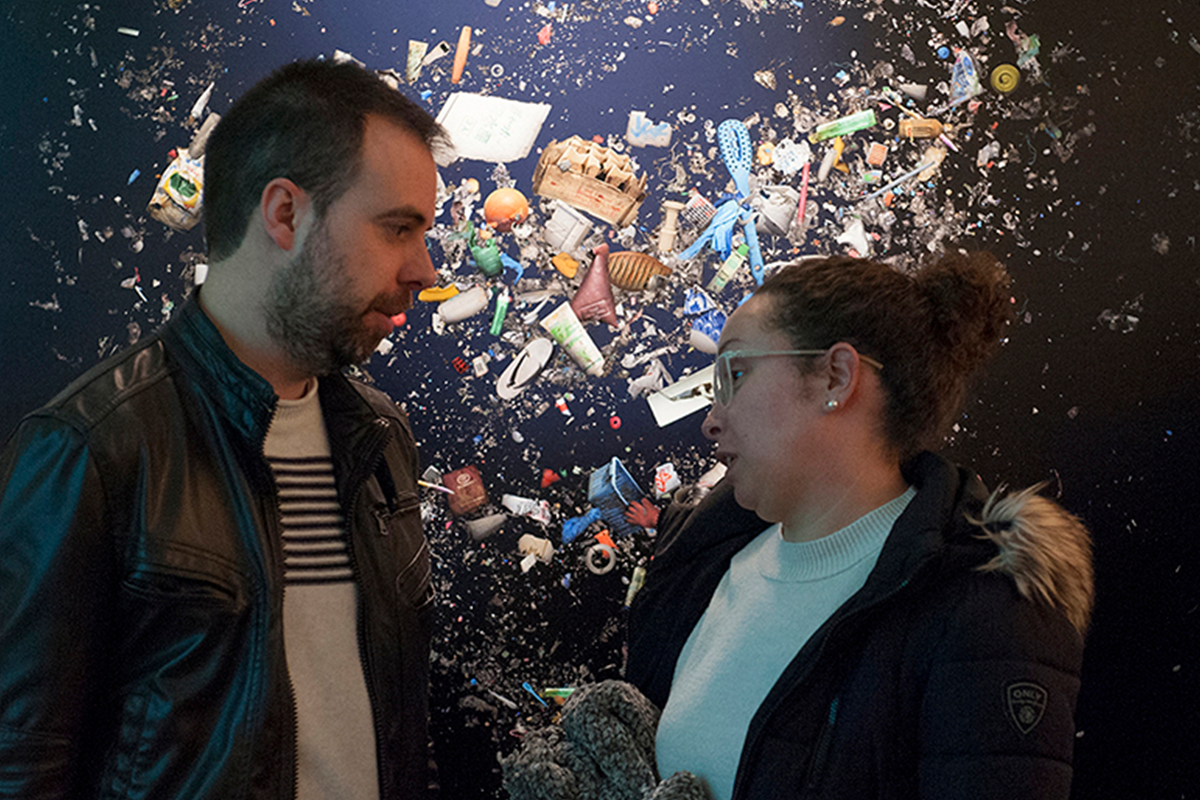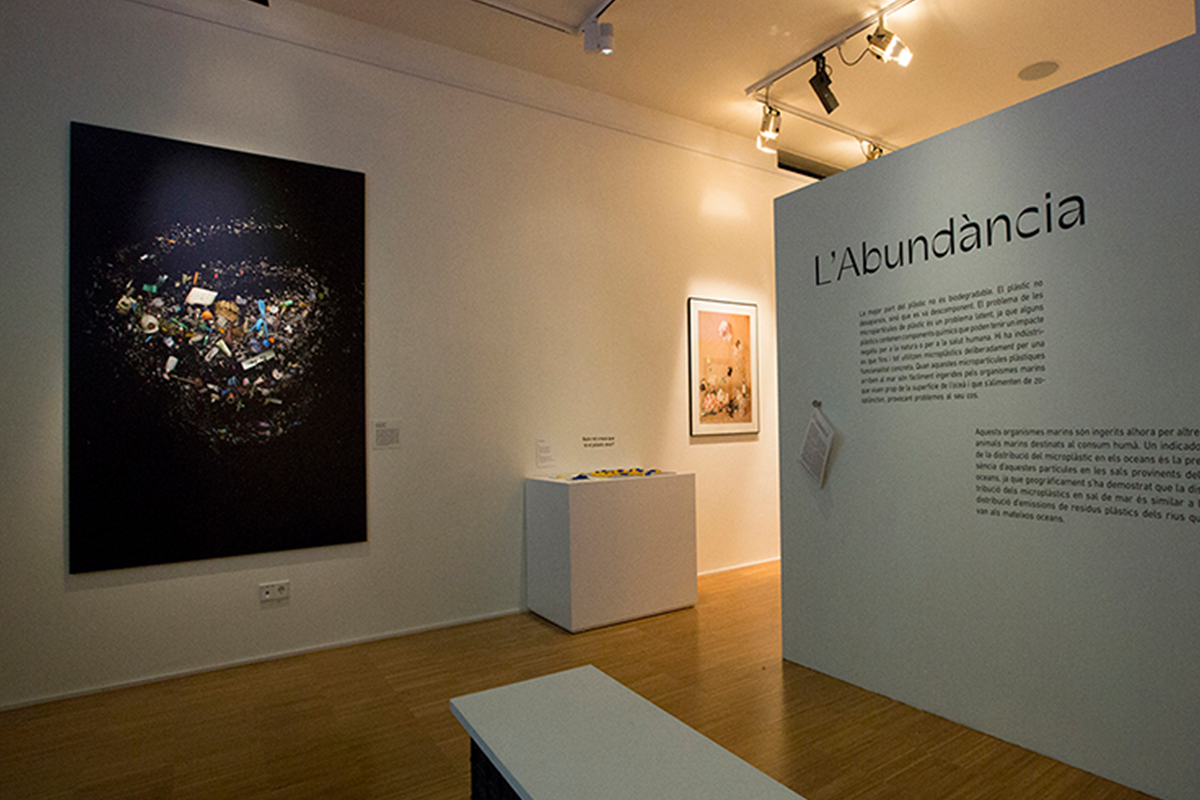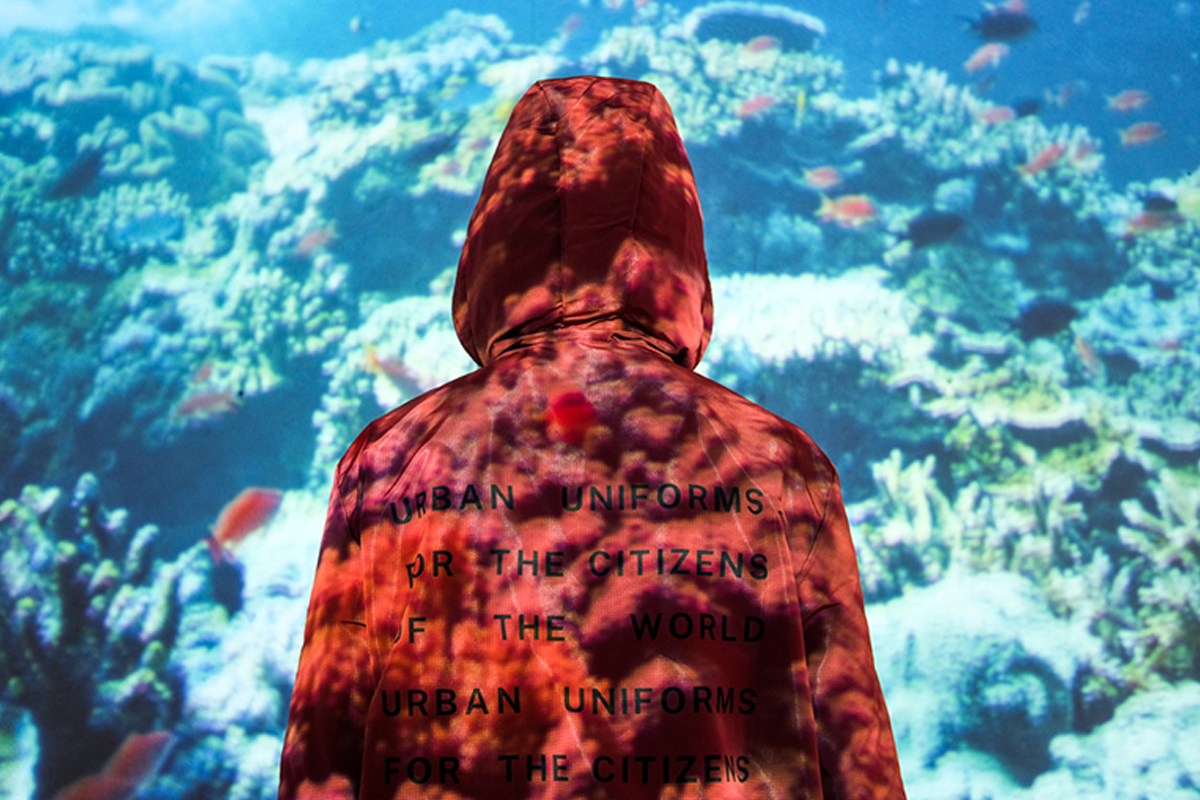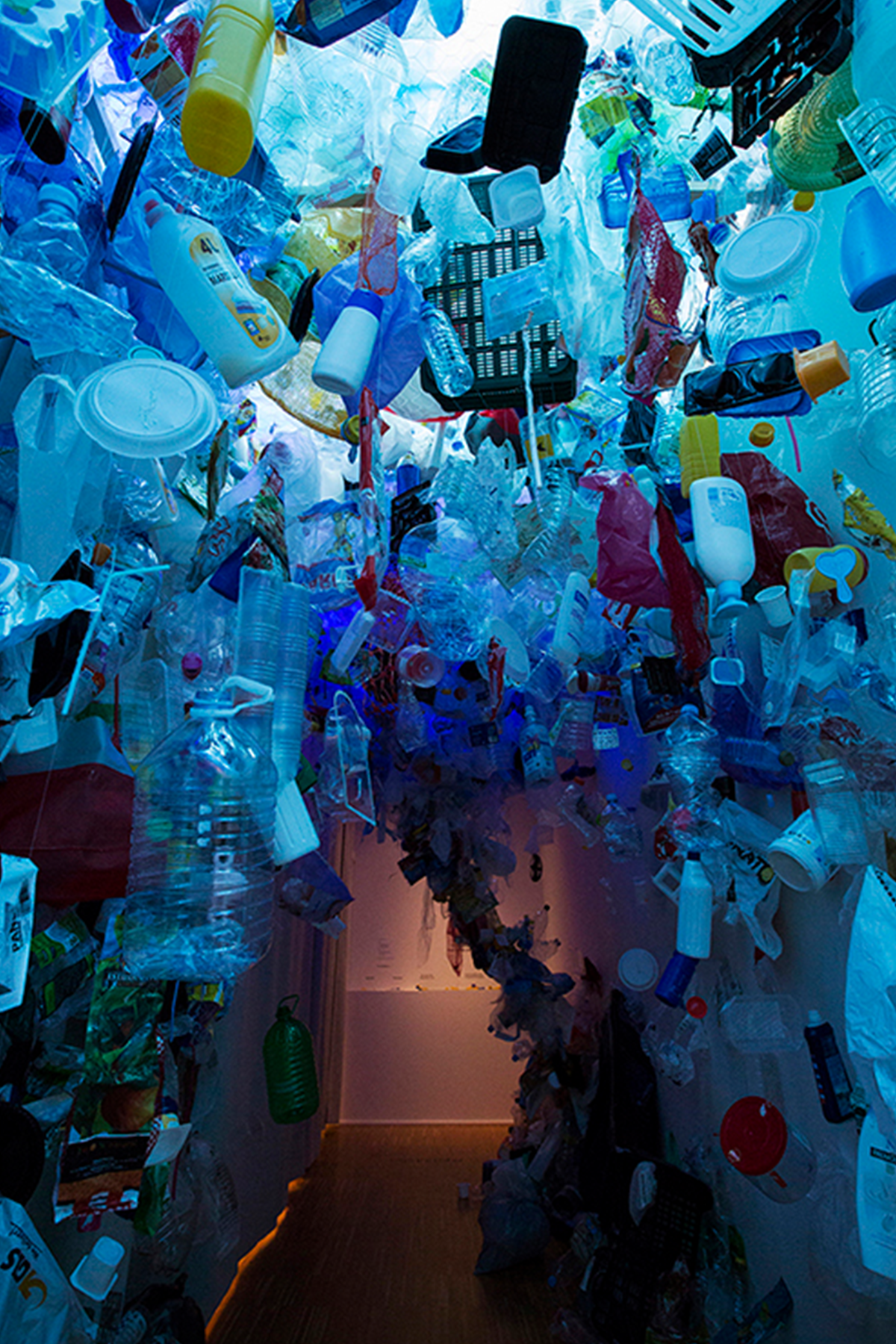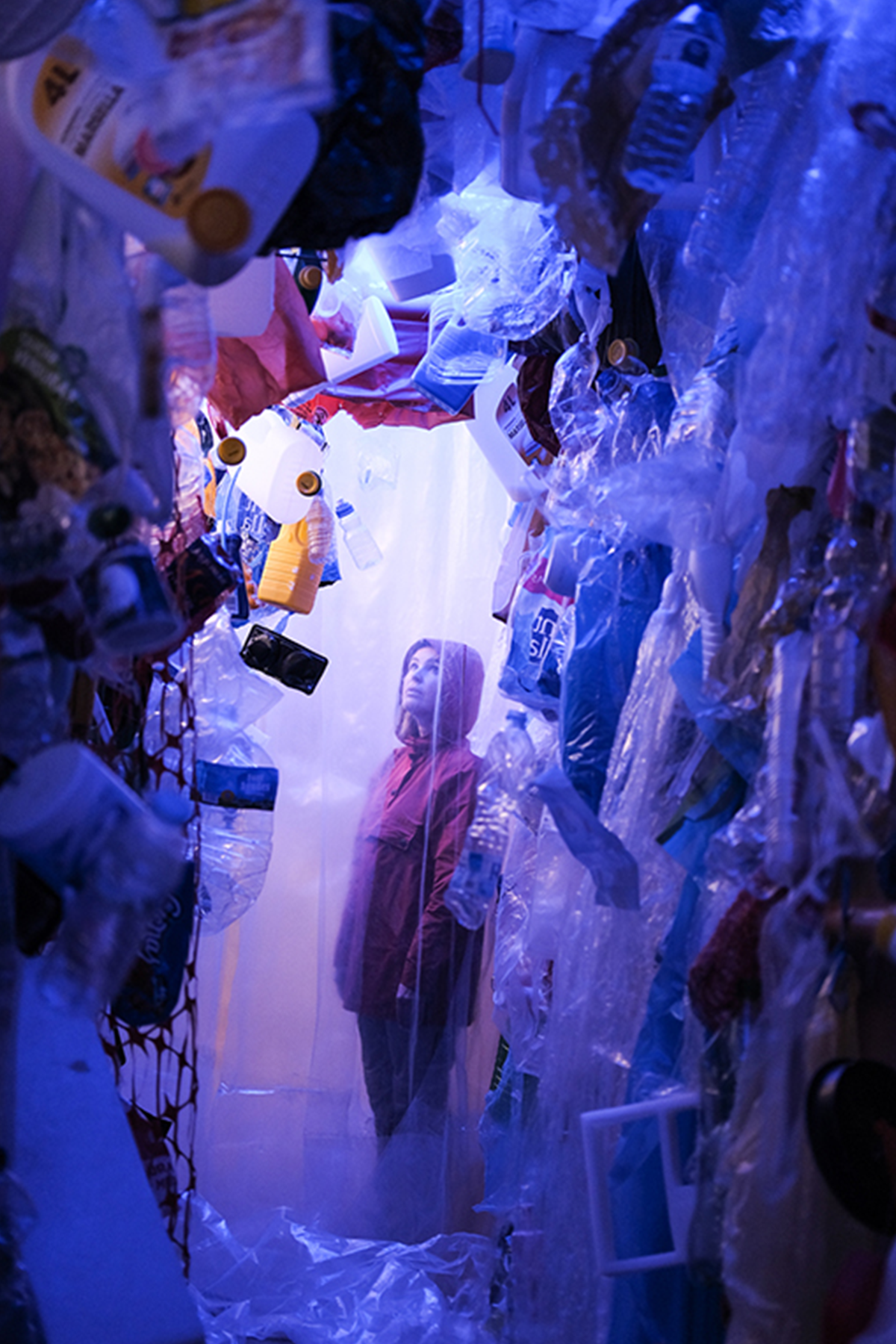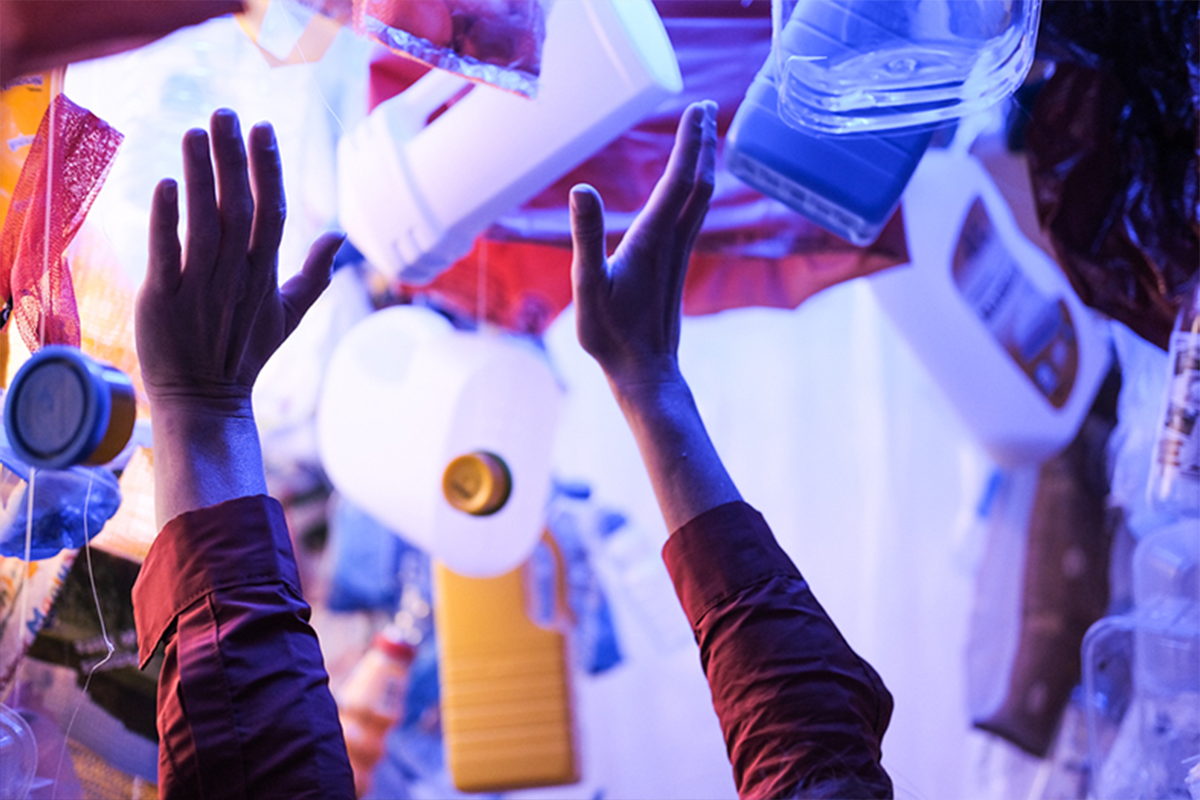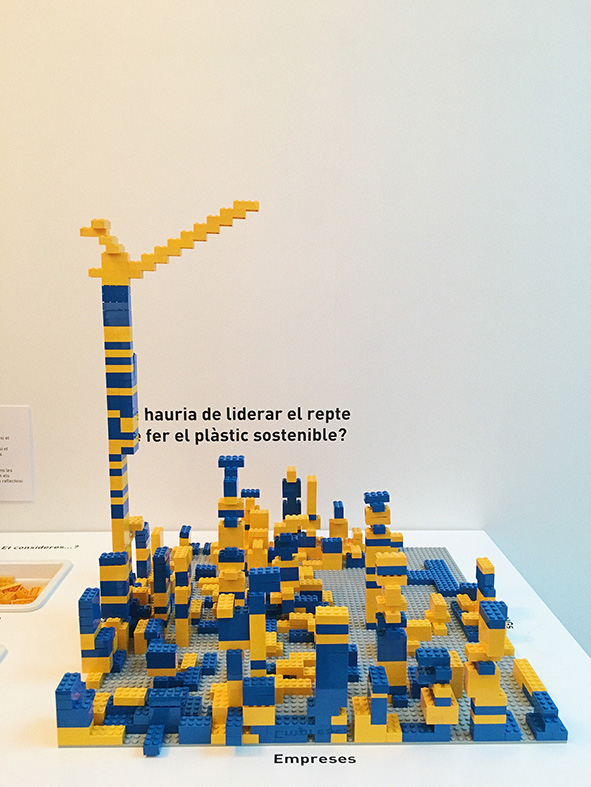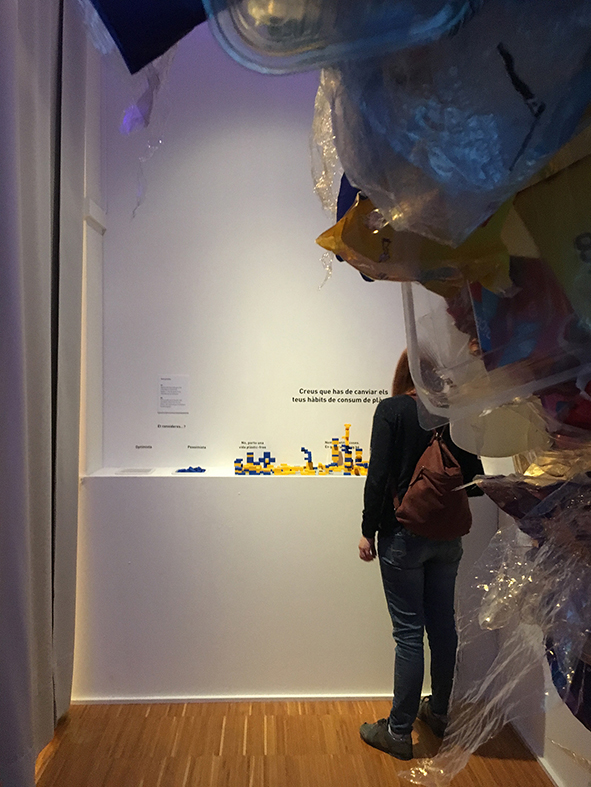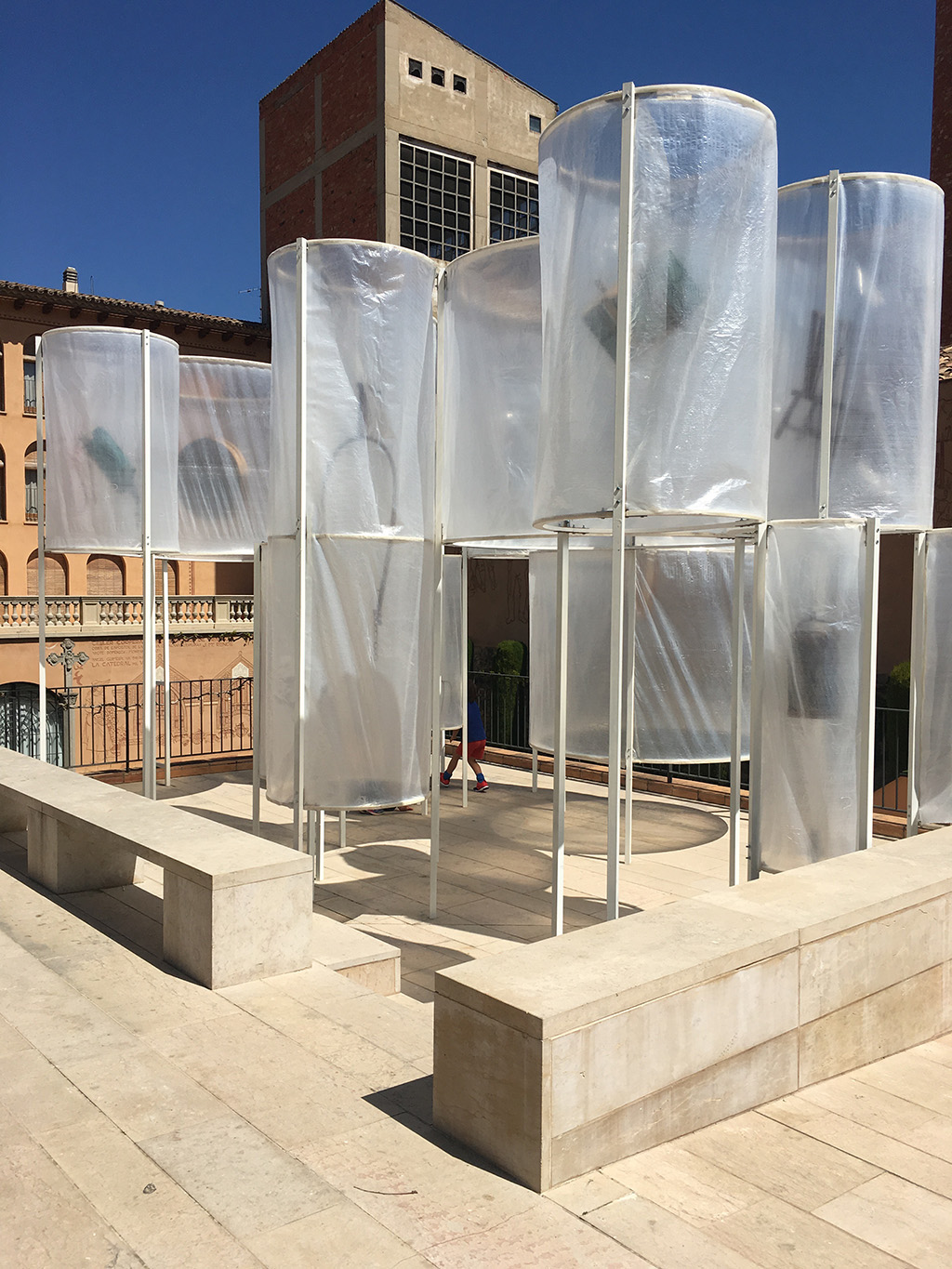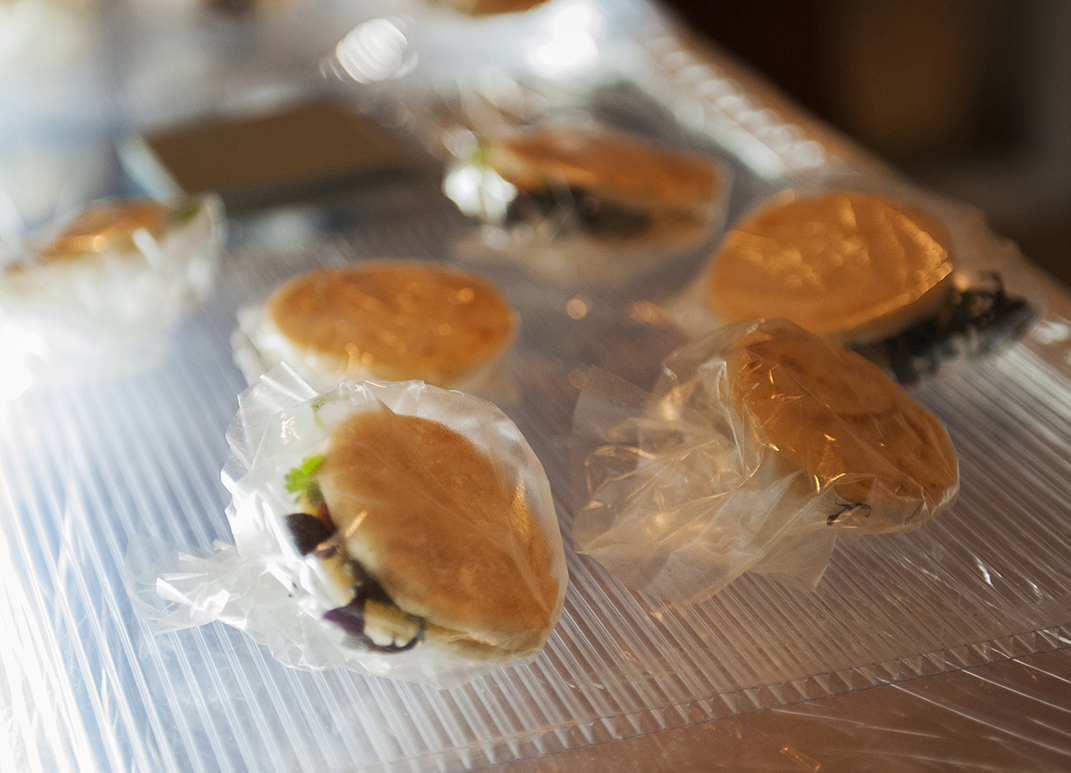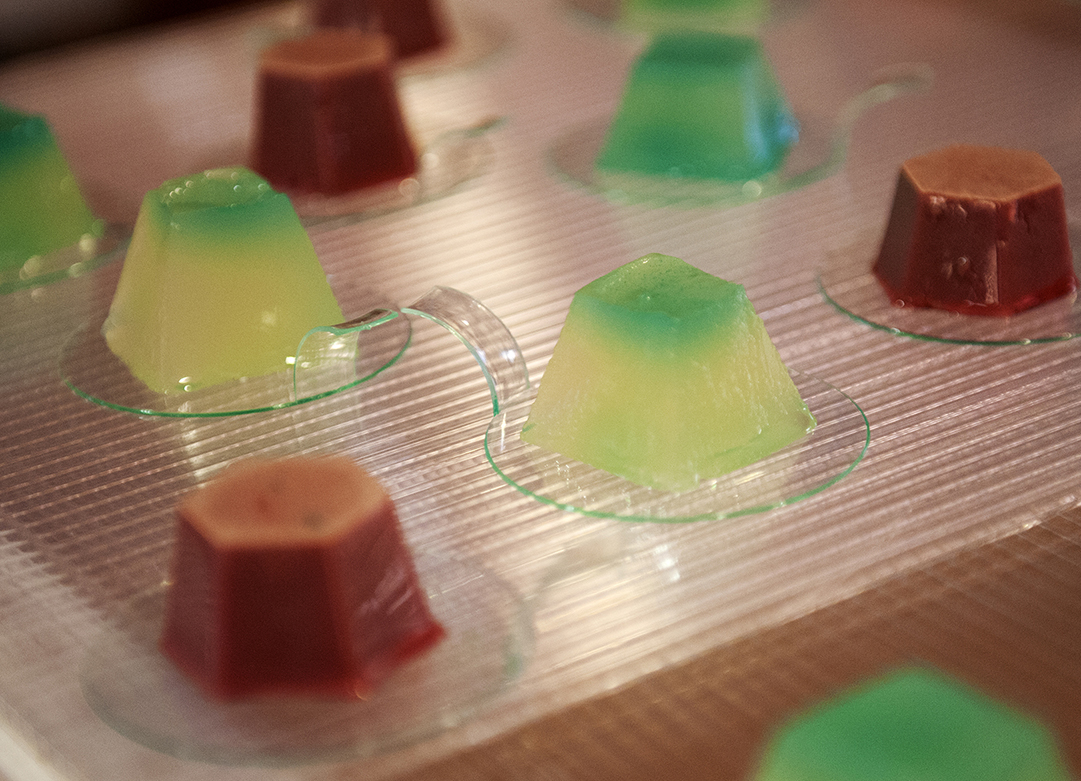Plastic, genius or perverse?
Curation, installation and visual identity for the exhibition “Plastic” of the Rural Life Museum, Fundació Carulla.
In 2018 I started working with the Rural Life Museum to co-curate the exhibition “Plastic, genius or perverse?”. A traveling exhibition that has already been at the Fishing Museum in Palamós, and the Leather Museum in Igualada. The years pass, but the theme remains current.
Scientists have been telling us about climate change for years and that we have less and less time left to reach the point of no return. One of the big problems is the excess of plastic we have on our planet. There are currently 5 islands of plastic floating in our oceans, called the garbage islands. There is a tendency to demonize plastic while others still resist to stop using it, but the problem is not the plastic itself, but us, the society, because we abuse of use of plastic -such a wonderful resource that never goes away. But what is the point of giving only one use to such a resistant material, that takes a year to disappear?
The “Plastic” exhibition was born from the need to reflect and debate about one of the materials that has changed our lives the most: the plastic. Our aim was to create an exhibition that generates reflection and critical thinking from an artistic and experimental perspective, bringing together artworks by twenty artists, and where users can participate, empowering themselves to be the engine of change.
Client: Rural Life Museum
Year: from 2019
The exhibition is divided into four rooms. In the first room, “The Plastic Age”, we see the representation of duplicated everyday objects. We have the classic version, wooden and metal containers, and the current version, all plastic. In addition, we find the biography of the material exposed in audiovisual format: when and how it was created and how it entered our lives.
The second room is called “The Object”. Here we come across different artistic pieces that have worked on the plastic bag (an icon of one of the many ephemeral uses we give to this eternal material) as an object of beauty. We are the ones who decide what we use only once, so we are the ones who assign it that value. The artworks contrast and oppose the necessary use of plastic vs. the unnecessary abuse of it.
The third room deals with the “Survival” of plastic, as this material survives above all other things. We can see artworks that represent metaphors of the durability of plastic. Here we learn that we produce more plastic than we can take on and spend.
The fourth room, “Abundance”, talks about abundance and its consequence: beaches and oceans are full of plastic and litter, thanks to our comfortable mindset and unconscious way of making things.
In this fourth room we end up inside an installation in which we immerse in a sea of plastic. An atmosphere that is distressing but also overshadowed by its beauty. What a paradox, right?
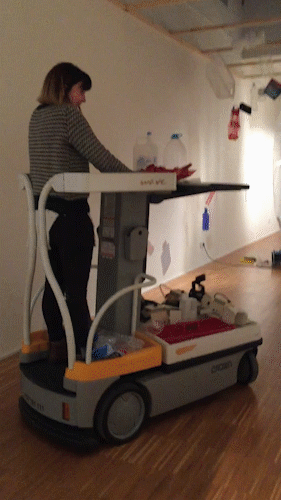
Throughout the exhibition, we meet with the intervention of Domestic Data Streamers, experts in analog data collection. They will ask us questions about our relationship with plastic.
The answers will have to be expressed in the form of an assembly piece, which means that after a while, users will build figures without being aware of it.
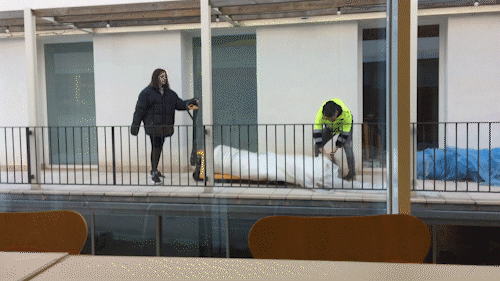
The Basurama collective carrying out its installation outside the Museum.
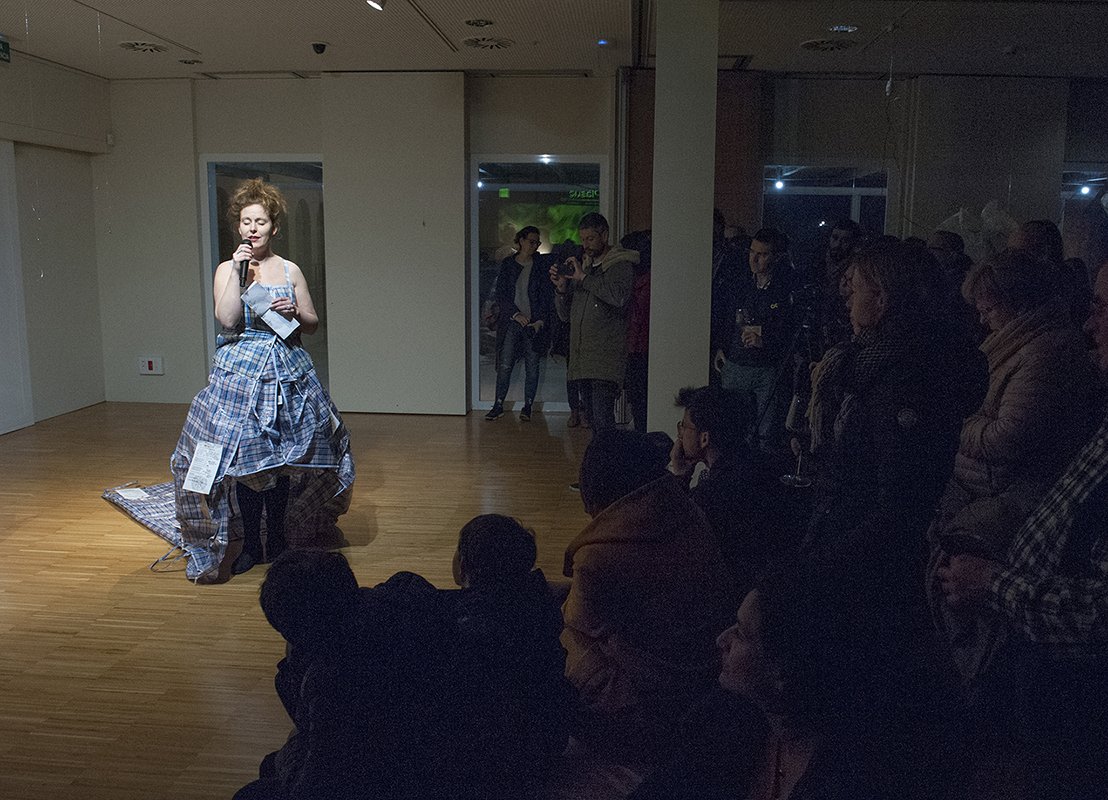
Different artists take part in the exhibition and treat their work from a perspective of social criticism; photographers, videographers, sculptors… Even space designers, food designers and artists specialized in performance took part in the inauguration.
The graphic had to respond to the purpose of the exhibition: to create a sense of duality, good and bad, hope and guilt. The chosen image, of Sílvia Conde, is responsible for achieving this duality: a perverse image -where you see someone spying-, but which is also particularly beautiful thanks to its composition.
We chose a typeface that breathes flexibility, “Continua” by Edition Studio, alluding in this way to the main material of the exhibition: the plastic. The black colour was chosen to represent the criticism of our consumption.
We also wanted to embody this flexibility through the layout of the room vinyls and the texts. The classroom texts were laminated to round off the conceptualization of the graphic. On each page of these folios we could find the following text: “This document has been plasticized using a polyethylene terephthalate (PET) cover that can take up to 150 years to decompose. It can be reused until the exhibition closes. Around 45kg of paper should be printed without the plastic sleeve.”



